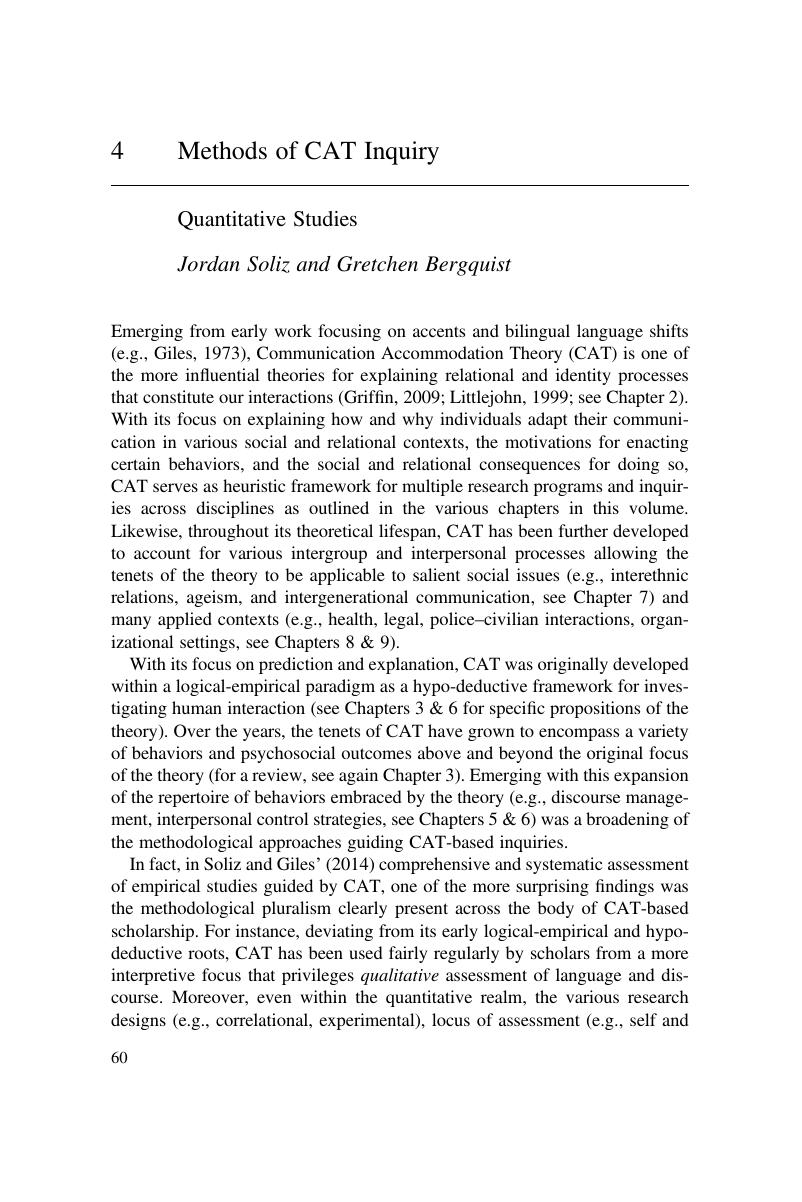 Communication Accommodation Theory
Communication Accommodation Theory Book contents
- Communication Accommodation Theory
- Communication Accommodation Theory
- Copyright page
- Contents
- Figures
- Tables
- Notes on Contributors
- Acknowledgments
- 1 The Social Origins of CAT
- 2 Theoretical Perspectives on Interpersonal Adjustments in Language and Communication
- 3 Accommodative Strategies as Core of the Theory
- 4 Methods of CAT Inquiry
- 5 The “Dark Side” of CAT
- 6 CAT and Talk in Action
- 7 Intergroup Accommodation, Social Categories, and Identities
- 8 Accommodating Health
- 9 CAT on Trial
- 10 Communication Accommodation Theory: Integrations and New Framework Developments
- Index
- References
4 - Methods of CAT Inquiry
Quantitative Studies
Published online by Cambridge University Press: 05 August 2016
- Communication Accommodation Theory
- Communication Accommodation Theory
- Copyright page
- Contents
- Figures
- Tables
- Notes on Contributors
- Acknowledgments
- 1 The Social Origins of CAT
- 2 Theoretical Perspectives on Interpersonal Adjustments in Language and Communication
- 3 Accommodative Strategies as Core of the Theory
- 4 Methods of CAT Inquiry
- 5 The “Dark Side” of CAT
- 6 CAT and Talk in Action
- 7 Intergroup Accommodation, Social Categories, and Identities
- 8 Accommodating Health
- 9 CAT on Trial
- 10 Communication Accommodation Theory: Integrations and New Framework Developments
- Index
- References
Summary

- Type
- Chapter
- Information
- Communication Accommodation TheoryNegotiating Personal Relationships and Social Identities across Contexts, pp. 60 - 84Publisher: Cambridge University PressPrint publication year: 2016
References
- 7
- Cited by


